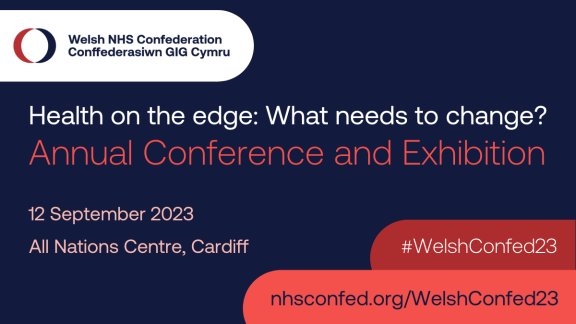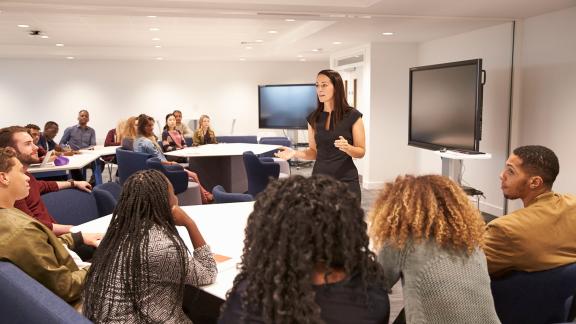Response to the Welsh Government’s Consultation on the Single Unified Safeguarding Review draft statutory guidance

Introduction
The Welsh NHS Confederation (WNHSC) welcomes the opportunity to respond to the Welsh Government’s consultation on the Single Unified Safeguarding Review (SUSR) draft statutory guidance.
The WNHSC represents the seven Local Health Boards, three NHS Trusts (Velindre University NHS Trust, Welsh Ambulance Services NHS Trust and Public Health Wales NHS Trust), and two Special Health Authorities (Digital Health and Care Wales and Health Education and Improvement Wales). The twelve organisations make up our Members. We also host NHS Wales Employers.
Does the Introduction provide clarity on the aims and reasons for producing the Single Unified Safeguarding Review process?
Members have welcomed the document, noting that the benefits of a Single Unified Safeguarding Review (SUSR) would be felt by all involved, especially families.
The document set outs the complexity of current partnership arrangements in Wales and provides clarity on the aims and reasons for the SUSR. However, there were some issues raised by our members that do require some further explanation. These included details of the membership of the Safeguarding Review Strategy Group and Operational Management Board, and how that membership will be determined. Also, the importance of capturing and reflecting the Serious Violence Duty within the process.
It is also crucial that the voice of victims and their families are placed at the centre of this work, and this could come through more strongly in the introduction.
The introduction could also set out more clearly the SUSR’s aim to prevent future generations from experiencing violence and harm, in line with Wales’ efforts to be a trauma-informed nation.
Do the Principles which underpin the SUSR set out in Section 2 achieve the desired outcome of a proactive approach to taking solutions forward and a positive shared learning culture which avoids multiple reviews of an incident, helping to reduce further trauma for victims and families?
The principles are clear, and members did welcome the clarity that the SUSR’s aim is not to apportion blame. It will be important to ensure that learnings from previous reviews are considered and shared across Wales to avoid duplication of learning in different areas. Previous reviews have recommended stronger communication and information sharing across organisations, but this has not materialised to date.
While the principles are laudable, it is important to note they will not achieve the stated outcomes alone and will require a strong action plan, with milestones against progress and data collection to enable evaluation.
Members also questioned the resources required and whether anything additional will be provided, specifically around point 2.5A. Further resources will also be required to ensure the multi-agency approach has sign up from all bodies involved to deliver against the outcomes.
Further work may be required to ensure all elements of the guidance, including the principles, are viewed from an equality and inclusion angle. The adherence to Welsh Government’s intention to deliver an anti- racist Wales by 2030 needs specific focus.
Does Section 3 provide the clarity required to determine when a SUSR should be undertaken and are the criteria clear and useful?
While the guidance as drafted is clear, one member did suggest consideration of mental health reviews. Issues which would need further thought would be the timeframes in which decisions are made, whether an SUSR is required or a standard mental health review, with clear communication with the family once a decision on review type has been reached.
The Offensive Weapons Homicide Review pilots will help to inform the inclusion of this type of review, as it does not lend itself to ‘safeguarding’ provisions and calls for specific expertise not currently found in Regional Safeguarding Boards (RSB) Community Safety Partnerships (CSP) or wider governance arrangements.
Worked examples could be included to make clear any key learning. For example, many statutory agencies are still of the view that the lack of any agency engagement with the victims of Domestic Homicide Reviews (DHR) precludes the need for a review. However, there is key learning in whether victims experienced barriers to reporting and seeking help, particularly when victims come from ethnic minorities.
Does Section 4 provide clarity of the SUSR process and is there sufficient detail for each stage?
While this section does provide clarity, members did note that information on the initial timeframe of the decision to commission a review is required, given that current case review meetings are held quarterly by the RSB. Clarity is also required as to whether SUSR will be the title of all reviews or whether it will only be used if the case falls into more than one possible review.
It was also noted that timescales included in this section underestimated the time it takes to produce an agreed action plan, due to the multi-agency nature of the reviews. It will be important to give these plans much further consideration to ensure they result in measurable outcomes.
Members also highlighted a need to involve corporate safeguarding teams within CSPs, to secure the voices of experienced organisation personnel in decision making.
Are each of the Roles and Responsibilities as set out in Section 5 clear and useful?
Members suggested that this section does fully explain the responsibility of all boards, capturing the complexity within this process. It could be useful to use a hypothetical case study, working back from judicial review, to clearly illustrate the role of each body or partnership and where accountability lies during each stage of the process.
However, it was suggested that a pool of reviewers and chair’s is difficult to maintain, with current safeguarding workload extremely busy and stressful. Releasing staff from small teams to undertake a review, which is likely to take at least six months, will put additional pressure on the workforce.
In relation to point 5.26, members also queried whether there is to be a SUSR Strategy Group meeting in addition to all other meetings. If so, who would be expected to sit on this group from each organisation. It will be key to minimise the number of sub-groups in the process to improve sustainability.
Do paragraphs 5.6-5.9 and appendix 3 of the guidance help Reviewer(s) to consider whether community partners should be engaged in the SUSR process? If not, how could the guidance improve on this?
While it was considered helpful by members, there were several suggestions as to how it could be further strengthened. Among these was the need to include non-Welsh Safeguarding Boards and organisations and consider how relevant learning from their reviews is captured.
Also, the need to scope every individual review could be emphasised to take account of all those involved in a victim’s life. It is important that panel membership includes specialists, or those with cultural competence, and it is not always clear where panels can gain that expertise from. It is vital that reviewers and panels take full account of protected characteristics and ensure that panel membership includes the relevant expertise.
Do paragraphs 5.7 – 5.9 and Appendix 3 of the guidance help Reviewer(s) to consider whether specified information should be requested from a ‘qualifying person or body’? If not, how could the guidance improve on this?
Much of the information provided in the previous answer applies here, but it is also important to avoid relying on statements produced for a different purpose, such as statements written as part of a police investigation, and which do not focus on learning.
To what extent do you think engagement from relevant community partners or the supply of specified information from a ‘qualifying person or body’, where appropriate, could assist the SUSR process?’
Engagement is key as making the future safer depends on informed communities, with a clear means of reporting concerns and seeking improvements. Additional information from community partners or a qualifying person will also help and may prove significant in building up a picture of an incident or the events leading up to it.
On section 5.39, there were concerns that this may hinder identification of a local reviewer due to the use of the phrase ‘not directly associated’. As health boards are regional organisations, it could mean any safeguarding specialist or other expert could not be a reviewer in any cases within that same region. As this would not be the same for local authorities, it would create an inconsistency.
Are the guidelines for engagement with victims, families and principal individuals as set out in Section 6 clear and useful?
There is a balance to be struck between the crucial need to place victims, their families and communities at the centre of the guidance, and members have indicated that further work needs to be done to achieve this.
However, we had indications that certain sections (6.4d, 6.6, 6.15g) have implications for organisations under data protection law and a duty of confidence. On the latter, while it is not absolute, health boards are required to identify a basis which allows it to be satisfied or appropriately disapplied and this would require the explicit consent of the patient. The duty could also be disapplied where a law requires disclosure or a patient’s clinician could perform a ‘public interest’ test, which balances the public interest in disclosure, against the duty of confidence.
Publication of reports can also prove challenging, with some independent reviewers reluctant to publish. The report findings are key to enable and to learn lessons to improve services and reduce the risks to service users and this needs to be strengthened and included.
Section 7 outlines the number of stages which need to be undertaken as part of the review process. Are these stages in the appropriate chronological order and clear in terms of what is required?
Members agreed that this section was clear, but steps need to be taken to prevent it from becoming an overly bureaucratic exercise.
It would also be advisable to improve the practitioner experience around learning events, as these can often cause a great deal of anxiety. It is also not always appropriate to have managers present, as practitioners may find it difficult to be open. A survey may be required to properly gauge practitioners’ feelings around learning events, and how it affects them.
On 7.9, there were queries regarding whether the Safeguarding Board Business Unit develops the genogram, and who pays for the IT tool if it is not readily available.
Does Section 8 ensure that learning is a key component of the SUSR process and a statutory obligation by providing clarity on how learning and information is shared as part of the wider process including working with relevant partnerships?
Members welcomed the measures within section 8, with the repository noted as a particularly positive addition. Section 8 also provides a holistic approach and will encourage reviewers to consider if a previously published recommendation has been implemented widely or if this needs to be raised again.
However, its success will depend on public services becoming ‘SUSR-guidance informed’, with an agreement to sign up to training.
Does Section 9 set out the data protection considerations in a way that is clear and useful? Would you like to see a clear legal obligation in this section requiring review partners to share information for SUSR review purposes when requested, if one could be found?
While recognising that a failure to share information can often be central to how things go wrong and collating holistic information can build a fuller picture of the situation, some care must be exercised in relation to health-related information. This should only be shared if deemed to be required as part of learning through the Safeguarding Review. 9.13 clarifies this to some extent although consent should be considered in each case and whether it is required.
Does the guidance provide sufficient clarity and flexibility to ensure that key partners including Community Safety Partnerships and Public Services Boards will be effectively engaged and involved within the SUSR process, where this is appropriate and helpful?
The guidance around this was welcome as communication between Boards has not previously been consistent, with this process ensuring improved communication by making it an obligation to participate.
There is work still to do around governance and accountability in relation to the join up between RSBs and CSPs, engagement of non-devolved services and the role of Public Service Boards (PSB).
What in your view would be the likely impacts upon individuals and groups with protected characteristics of the ways of working set out in this guidance? Your views on how positive effects could be increased, or negative effects could be mitigated, would also be welcome.
An explicit recognition would be welcomed around the need for training with a person(s) with lived experience for panel members, chair and reviewer. Positive effects could also be increased by open and transparent communication with victims and families, including providing clear guidance on what to expect from the report and preparing them for the type of information included.
There were concerns around the identification of individuals due to the nature of an incident or media coverage.
The ways in which the guidance will ensure equality and inclusion need more consideration. Wales has in place the frameworks to support a clear baseline to measure progress (All-Wales Anti-Racism Plan, National Trauma Framework, Women’s Justice Blueprints) and the guidance would benefit with greater connection to this policy landscape.
What in your view are the likely other impacts of the ways of working set out in this guidance? You may wish to consider, for example, benefits, and disbenefits; costs and savings; other practical matters. Your views on how positive effects could be increased, or negative effects could be mitigated, would also be welcome.
The process is a welcome paradigm-shift in system-wide leadership and its aim to bring all these reviews into one process that also promotes One Wales Public Service is welcome. Its successful implementation will depend on several factors, one of which is the related costs, such as administration and the need to source external specialists. Using Adult Practice Review (APR) as an example, out of the two reviewers one might be an internal or partner agency employee who undertakes the role in addition to their day job. They will not receive any additional pay for this. The other reviewer may have been sought externally and can be paid thousands of pounds to take on the role. There is disparity here which needs to be addressed.
The number of reviews is increasing, along with the safeguarding agenda, and caseload stretches staff resources further. Positive effects could be improved with additional resources or funding provided to organisations to meet the demand of the expansion in workload surrounding all diverse areas of safeguarding.
We would like to know your views on the effects that the SUSR process would have on the Welsh language, specifically on opportunities for people to use Welsh and on treating the Welsh language no less favourably than English.
Please also explain how you believe the proposed policy could be formulated or changed so as to have positive effects or increased positive effects on opportunities for people to use the Welsh language and on treating the Welsh language no less favourably than the English language.
Members did note that all reviews are bi-lingual and published in Welsh and English but suggested consideration could be given to learning events in Welsh if required and assessment of system readiness to bring in this guidance on a bilingual basis.
We have asked a number of specific questions. If you have any related issues which we have not specifically addressed, please report them here.
Concerns have been highlighted about the cost and agency capacity to complete numerous reviews and to realise the ambitions set out in the guidance. Also, a standard fee for each role should be considered to rule out the possibility that other areas or safeguarding boards can offer greater financial incentives, with the employing organisation not subject to the cost of travel in the case of any reciprocal arrangements between safeguarding boards.
The CPS fund DHRs and all administration costs and the budget calculated over a 2-year period should either be transferred or an agreement that all costs associated with a DHR need to be funded by the CSP.
There were also concerns around independence and the number of reviews which could be conducted by the same person in the same region per year, with the possible familiarity proving a hinderance to independence and learning.



